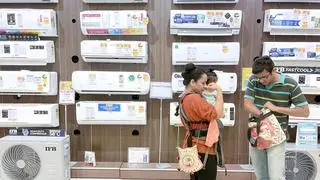The strategic partnership helps Log9 to repurpose batteries that have reached end-of-first-life to make second-life solutions for renewable energy storage. Its batteries are long-life capable of more than 15,000 cycles in EV use cases.
The partnership aims to solve the arbitrage of trust, transparency, and accountability of the residual value of the lithium-ion batteries and to accelerate Net Zero material transition efforts of Log9, maximizing the utility of their annual production of 250 MWh lithium-titanium-oxide (LTO) EV batteries, Log9 said.
LOHUM, which has an annual lithium battery recycling capacity of 10,000 tonnes, as an Extended Producer Responsibility (EPR) partner registered under India’s Battery Waste Management Rules will enable Log9 to seamlessly meet its material recovery targets when its LTO batteries reach end of their life.
Log9’s VP (Finance) Vinay Iyer said the company has been endorsing its practices of battery tokenisation and ensuring that batteries supplied for second life usage are backed by a digitised ledger of usage data thereby enabling recyclers with accurate predictability of state of health (SOH) for their input materials.
Recycling of batteries will also help to some extent in meeting the high demand for raw materials.
For instance, according to Benchmark Intelligence, the global Lithium supply stood at 678 kilo tonnes in 2022 with demand projected to hit 4,000 kilo tonnes by 2035. Similarly, cobalt supply stood at 177 kilo tonnes in 2022 and by 2035, 489 kilo tonnes would be required. For Nickel, the supply last year stood at 3,160 kilo tonnes, which is expected to surge to 6,200 kilo tonnes by 2035.
Battery recycling
At the recently concluded G20 meetings on clean energy transition, a policy brief created for an official engagement group of the G20 said that battery recycling is at a nascent stage with gaps concerning technology in reducing recycling cost and improving material recovery capacity.
The policy paper — Building a resilient EV battery value chain — submitted to Task Force-4 (TF-4) was written by Pradeep Karuturi from OMI Foundation’s Centre for Clean Mobility as well as Perminder Jit Kaur and Rohan Malhotra from the DST’s Centre for Policy Research at the Indian Institute of Science, Bangalore.
Speaking to businessline, Karuturi said “EV battery recycling space in India is currently in its early stages of development. A significant portion of recycling volumes is attributed to electric two-wheelers that are primarily used for commercial purposes, followed by electric three-wheelers.”
Manufacturing scrap is also expected to contribute significantly to recycling volumes after 2025, once cell manufacturing capacities in India are established substantially. India’s heavy reliance on imports for battery raw materials, coupled with the lengthy 10 to 15 year period between raw material discovery and large-scale commercial mining, underscores the importance of strengthening recycling ecosystem for energy security, he added.
“Initiatives that provide transparency of battery performance are an important step towards enhancing the recycling sector further. There should also be emphasis on developing low-cost recycling technologies that provide battery grade raw materials from initiatives by both the government and industry,” Karuturi emphasised.
Battery recycling
The policy paper pointed out that in Li-ion batteries, standard formulations for cathode materials include minerals such as lithium, aluminium, cobalt, manganese, and nickel, while anode is made of graphite. Recycling batteries can generate around 95 per cent of these metals to be reused in manufacturing new batteries.
EV batteries usually retain 70-80 per cent valid energy after completing their whole life cycle and are reused for grid-connected and behind-the-meter applications. It has been found that existing battery waste materials can generate a value of about $4800-5200 per tonne.
Reuse for grid applications is in the range of two to five years. Usually, their performance is assumed to fall below 70-80 per cent of the initial nameplate capacity, which needs scientifically designed treatment strategies.







Comments
Comments have to be in English, and in full sentences. They cannot be abusive or personal. Please abide by our community guidelines for posting your comments.
We have migrated to a new commenting platform. If you are already a registered user of TheHindu Businessline and logged in, you may continue to engage with our articles. If you do not have an account please register and login to post comments. Users can access their older comments by logging into their accounts on Vuukle.